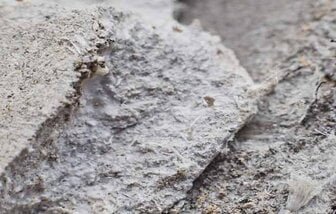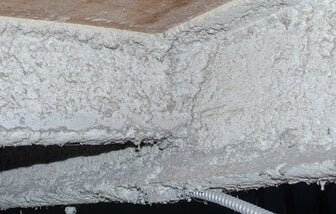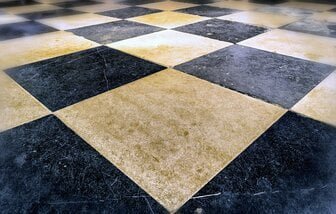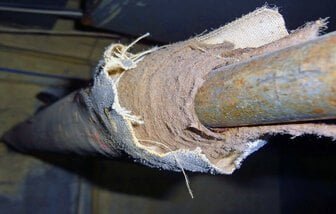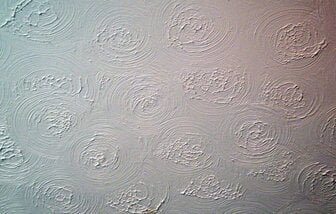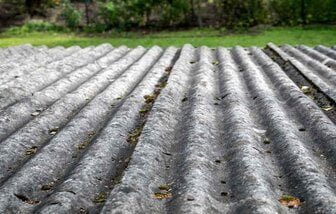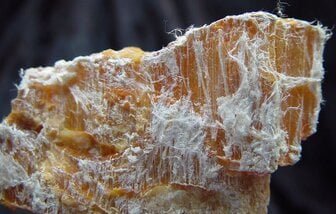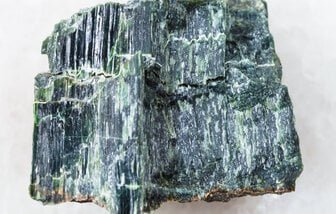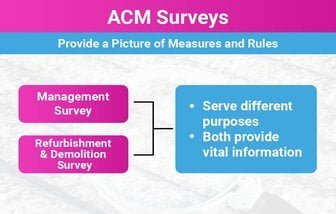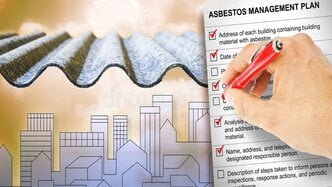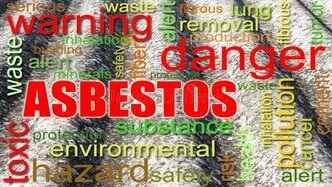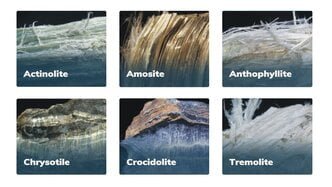What is asbestos Millboard?
Learn about asbestos millboard, a commonly used insulation material between 1896 and 1965. Discover the potential health risks of asbestos exposure and the importance of professional testing and removal. Find out more about asbestos fibers and the dangers they pose. Protect your safety and well-being by understanding the risks associated with asbestos millboard and other asbestos-containing materials.
Asbestos millboard comprehensive overview
Asbestos millboard is a type of insulation material that was commonly used in construction and industrial settings between the years 1896 and 1965.
It was primarily used for its heat-resistant properties and was made by compressing asbestos fibers into a sturdy board-like form. However, it is important to note that millboards manufactured during this time period may contain chrysotile asbestos, with levels of up to 97%.
Chrysotile asbestos, also known as white asbestos, is one of the most commonly used types of asbestos due to its flexibility and heat resistance. It was widely used in various industries for its insulation properties, including the production of millboard.
While asbestos millboard was once considered an effective and reliable insulation material, it is now recognized as a potential health hazard due to the presence of asbestos fibers.
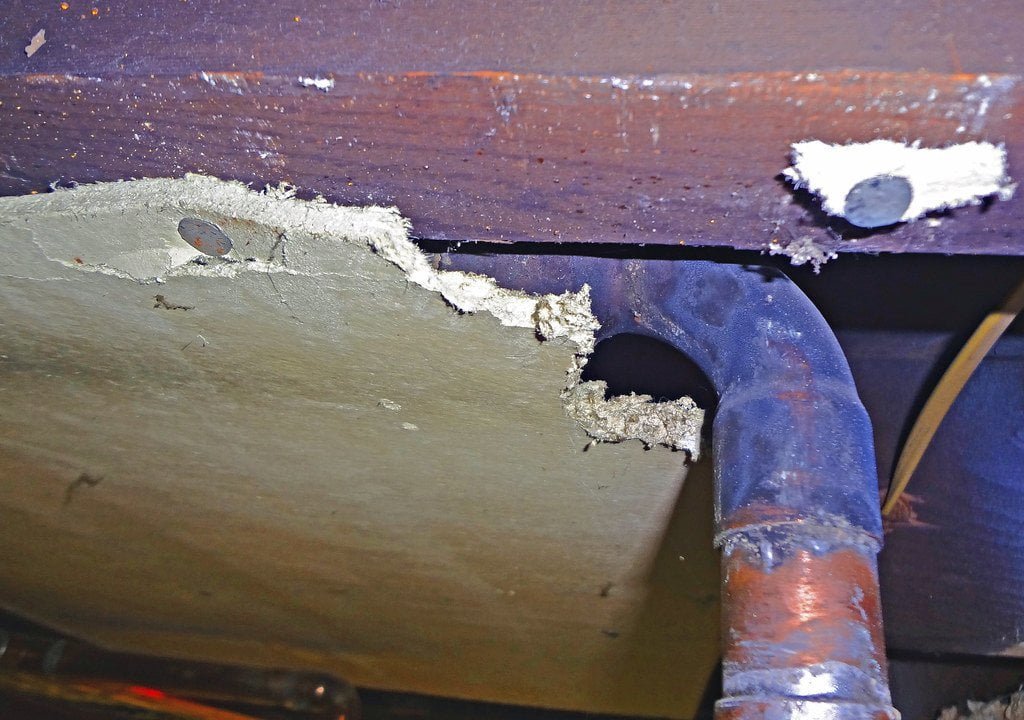
Asbestos millboard is a type of insulation material that was commonly used in buildings and homes before the health risks associated with asbestos were widely known. Due to its hazardous nature, it is important to take the necessary precautions when removing asbestos millboard to ensure the safety of yourself and others.
1. Assess the Situation
Before starting the removal process, it is crucial to assess the condition of the asbestos millboard. If the material is in good condition and undisturbed, it may be safer to leave it in place and monitor it for any signs of damage or deterioration. However, if the millboard is damaged or crumbling, it needs to be removed immediately.
2. Gather the Required Equipment
Proper protective gear is essential when dealing with asbestos millboard. Make sure to wear a disposable coverall, gloves, goggles, and a respirator with a P100 filter. Additionally, you will need plastic sheeting, duct tape, a spray bottle with water, and a HEPA vacuum cleaner.
3. Prepare the Work Area
Containment is crucial to prevent the spread of asbestos fibers during the removal process. Seal off the work area by covering all openings, such as doors and windows, with plastic sheeting and duct tape. Lay down plastic sheeting on the floor to catch any debris or dust.
4. Wet the Millboard
Prior to removal, it is important to wet the millboard to minimize the release of asbestos fibers. Fill a spray bottle with water and lightly mist the millboard. Avoid saturating the material as this may cause it to become more friable.
5. Carefully Remove the Millboard
Using a utility knife, carefully cut through the millboard, making sure to avoid creating any dust or debris. Place each piece into a heavy-duty plastic bag and seal it tightly. Avoid breaking or crushing the millboard as this can release asbestos fibers into the air.
6. Clean the Work Area
After removing the millboard, thoroughly clean the work area to remove any remaining dust or debris. Use a HEPA vacuum cleaner to carefully vacuum all surfaces, including the plastic sheeting on the floor. Dispose of the vacuum bag properly in a sealed plastic bag.
7. Dispose of the Materials
It is crucial to dispose of the asbestos-containing materials properly to prevent any further exposure. Contact your local waste management authority or a licensed asbestos contractor for guidance on how to safely dispose of the materials in accordance with local regulations.
8. Seek Professional Help
While it is possible to remove asbestos millboard on your own, it is always recommended to seek professional help. Licensed asbestos contractors have the expertise and equipment to safely handle and dispose of asbestos-containing materials, ensuring the highest level of safety for you and your surroundings.
Remember, asbestos exposure can lead to serious health issues, including lung cancer and mesothelioma. If you suspect the presence of asbestos millboard or any other asbestos-containing materials in your home or building, it is best to consult with a professional asbestos inspector for proper assessment and guidance.
By following these steps and taking the necessary precautions, you can safely remove asbestos millboard and minimize the risk of exposure to harmful asbestos fibers.
Exposure to asbestos fibers can pose significant health risks, particularly when the fibers are inhaled. When asbestos-containing materials, such as millboard, are disturbed or damaged, microscopic asbestos fibers can be released into the air. These fibers can then be inhaled into the lungs, where they may become lodged and cause various health issues over time.
One of the most serious health risks associated with asbestos exposure is the development of mesothelioma, a rare and aggressive form of cancer that primarily affects the lining of the lungs, abdomen, or heart. Other asbestos-related diseases include lung cancer, asbestosis (a chronic lung condition), and various respiratory problems.
It is important to note that the risks of asbestos exposure are highest for individuals who frequently come into direct contact with asbestos-containing materials, such as workers in construction, demolition, and renovation industries. However, even minimal exposure to asbestos fibers can potentially lead to health complications, as the fibers are extremely durable and can remain in the body for many years.
Due to the known health risks associated with asbestos, the use of asbestos-containing materials, including millboard, has been heavily regulated or banned in many countries. However, it is still possible to come across asbestos millboard in older buildings or industrial settings that have not undergone proper asbestos removal procedures.
If you suspect the presence of asbestos millboard in your home or workplace, it is crucial to seek professional assistance for proper testing and removal. Attempting to handle or remove asbestos-containing materials without the necessary expertise and precautions can lead to further fiber release and increased exposure risks.
In conclusion, asbestos millboard was a commonly used insulation material between 1896 and 1965, primarily due to its heat-resistant properties. However, it is important to be aware of the potential health risks associated with asbestos exposure. If you suspect the presence of asbestos millboard or any other asbestos-containing materials, it is essential to consult professionals for proper testing and removal to ensure the safety and well-being of all occupants.
Asbestos millboard is a type of insulation material made of compressed asbestos fibers mixed with other materials, such as cement or rubber. It was commonly used for fireproofing, insulation, and electrical insulation purposes in buildings and machinery.
Due to the hazardous nature of asbestos, which can cause serious respiratory diseases, including lung cancer and mesothelioma, it is crucial to handle asbestos millboard with extreme caution.
Legal Requirements for Asbestos Disposal
In the UK, the disposal of asbestos millboard is regulated by the Control of Asbestos Regulations 2012. These regulations require individuals or businesses to take specific steps when dealing with asbestos-containing materials, including millboard.
Here are the key legal requirements for asbestos disposal:
- Notify the local environmental health department: Before starting any work involving asbestos millboard, you must notify your local environmental health department at least 14 days in advance.
- Engage a licensed asbestos removal contractor: Asbestos removal must be carried out by a licensed contractor who follows strict safety guidelines and regulations.
- Obtain a consignment note: When the asbestos waste is collected, you must receive a consignment note from the licensed contractor. This note ensures that the waste is disposed of properly at a licensed disposal facility.
Asbestos Disposal Costs
The costs associated with asbestos disposal in the UK can vary depending on several factors, including the amount of asbestos millboard to be disposed of and the location of the property. It is advisable to obtain quotes from licensed asbestos removal contractors to get an accurate estimate.
Here are some of the key cost factors:
- Quantity of asbestos millboard: The larger the quantity of asbestos millboard, the higher the disposal costs are likely to be. Contractors often charge based on the weight or volume of asbestos to be removed.
- Accessibility: If the asbestos millboard is located in an area that is difficult to access, such as a confined space or high-rise building, the removal process may require additional precautions and equipment, which can increase the overall cost.
- Disposal facility fees: Licensed asbestos disposal facilities charge fees for accepting and properly disposing of asbestos waste. These fees can vary depending on the facility and the region.
It is essential to obtain multiple quotes from licensed contractors to compare prices and ensure you are getting a fair deal. Remember, the lowest price may not always guarantee the best service, so it is important to consider the reputation and experience of the contractor as well.
Conclusion
Disposing of asbestos millboard is a complex process that requires strict adherence to legal requirements and safety guidelines. It is crucial to engage a licensed asbestos removal contractor to ensure the safe and proper disposal of asbestos waste. Additionally, obtaining multiple quotes and considering the associated costs will help you make an informed decision.
Remember, the health and safety of yourself, others, and the environment should always be the top priority when dealing with asbestos-containing materials.
Asbestos millboard is a type of insulation material that was commonly used in buildings and industrial settings in the past. However, due to its hazardous nature, the use of asbestos millboard has been heavily regulated by health and safety legislation. In this article, we will explore the dangers associated with asbestos millboard and the specific regulations set forth by the Health and Safety Executive (HSE) in the United Kingdom.
The Dangers of Asbestos Millboard
Asbestos millboard is made from a mixture of asbestos fibers and a binding material such as cement or resin. When this material is disturbed or damaged, it releases microscopic asbestos fibers into the air. These fibers can be inhaled and can cause serious health problems, including lung cancer, mesothelioma, and asbestosis.
One of the concerning aspects of asbestos millboard is its durability. It is resistant to fire, heat, and chemicals, making it a popular choice for insulation in the past. However, this durability poses a significant risk when it comes to its removal or repair. The fibers can easily become airborne during these processes, putting workers and occupants of the building at risk of exposure.
HSE Legislation on Asbestos Millboard
The HSE in the UK has implemented strict regulations to protect workers and the general public from the dangers of asbestos millboard. These regulations include the Control of Asbestos Regulations 2012 and the Asbestos Licensing Regulations 1983.
The Control of Asbestos Regulations 2012 require duty holders, which can include employers, building owners, and managers, to assess the presence of asbestos-containing materials, including asbestos millboard, in their premises. If asbestos millboard is found, duty holders must develop a management plan to minimize the risk of exposure and ensure the safety of workers and occupants.
Furthermore, the Asbestos Licensing Regulations 1983 state that any work involving the removal or repair of asbestos millboard must be carried out by licensed contractors. These contractors have undergone specific training and have the necessary expertise to safely handle and dispose of asbestos-containing materials.
Safe Removal and Disposal
When it comes to the removal and disposal of asbestos millboard, it is crucial to follow strict safety procedures. Only licensed contractors should undertake this work, as they have the knowledge and experience to minimize the risk of exposure.
The removal process typically involves sealing off the area, using specialized equipment to prevent the release of fibers, and wearing appropriate personal protective equipment (PPE). The asbestos millboard is carefully removed and placed in sealed containers for proper disposal in designated waste sites.
Conclusion
Asbestos millboard poses significant health risks due to its potential to release asbestos fibers when disturbed. The HSE legislation in the UK provides guidelines and regulations to ensure the safe management, removal, and disposal of asbestos millboard. It is essential for duty holders to comply with these regulations to protect the health and well-being of workers and occupants. By working with licensed contractors and following proper safety procedures, the risks associated with asbestos millboard can be effectively mitigated.
Asbestos Millboard
Millboards manufactured between 1896 and 1965 can contain chrysotile asbestos (up to 97%). Often found in: Pipe runs, electrical gear, vaults, storage. Often used for: Fire protection on structural
Asbestos Cement
Generally containing 10-15% asbestos fibres which are bound in Portland cement or calcium silicate. Uncoated sheets, widely used in the past as a building material can be identified as light grey in
Asbestos Sprayed Coatings
Asbestos sprayed coatings have been widely used in the construction industry in the past, particularly in the United Kingdom
Asbestos Tiles
Learn about asbestos floor tiles in the UK, including their identification, dangers, and management. Find out how to identify asbestos floor tiles
Asbestos Lagging, Ropes & Yarns
Asbestos lagging and ropes were once widely used for their insulation properties. However, due to the health risks associated with asbestos exposure, their use has been banned in many countries.
Asbestos Textured Coatings
Asbestos textured coatings, also known as Artex or similar products, were widely used in the construction industry in the UK from the 1960s to the 1990s. These coatings were applied to ceilings
Corrugated Asbestos Panels
When it comes to garage roofing in the UK, one type of material that was widely used in the past is corrugated asbestos panels. However ue to health and safety concerns, the use of asbestos has been banned
Crocidolite Asbestos
Learn about crocidolite asbestos, a highly hazardous form of asbestos that was widely used in various industries. Discover its properties, health risks, and the importance of professional testing and removal.
Amosite Asbestos
Amosite asbestos, also known as brown asbestos, is a type of asbestos mineral that was widely used in various industries for its heat resistance and insulating properties.
Chrysotile Asbestos
Learn about chrysotile asbestos, its applications, and the potential health risks associated with exposure. Understand the importance of safety measures and regulations to prevent asbestos
Asbestos Surveys
We are able to provide any level of survey required, up to the Demolition and Refurbishment survey now required prior to the demolition of any building or structure.
What is Asbestos?
Asbestos was commonly used as a construction material in the UK between the 1950s and 1980s in particular. If your home was built between these years, chances are that you are living with Asbestos
Asbestos Management Plan
An asbestos management plan is essential for managing asbestos-containing materials (ACMs) in buildings. It aims to protect occupants and workers from asbestos exposure through identification, assessment, and control of ACMs.
Asbestos Dangers
Learn about the dangers of asbestos, its health risks including mesothelioma and lung cancer, and how to protect yourself from exposure. Understand the regulations and laws regarding asbestos, and find resources and support for asbestos-related issues.
Types Of Asbestos
Learn about the different types of asbestos, including chrysotile asbestos, amphibole asbestos, tremolite asbestos, and anthophyllite asbestos. Understand the characteristics and health risks associated with each type of asbestos.
How To Manage Asbestos
Dealing with asbestos requires caution and adherence to proper safety procedures. Identifying asbestos and taking appropriate action is crucial to protect the health and well-being of individuals. If you suspect the presence of asbestos.
Ready to start your project?
Committed to Excellence on all levels
Let's Work Together
Please complete the form below and someone from the Total team will be in touch to discuss your asbestos requirements For urgent needs, our customer support team is available through various channels. You can reach us via phone during business hours, or through our dedicated email support. We are committed to providing timely assistance and ensuring your asbestos concerns are addressed promptly and professionally.


